DANCE: Put On Your Dancing Shoes
Critic Lightsey Darst offers an entertaining and helpful primer on adult dance classes, from ballet to bellydancing: what to look for, where to find a class, and the best kind of dance form for your body type, fitness level, and experience.
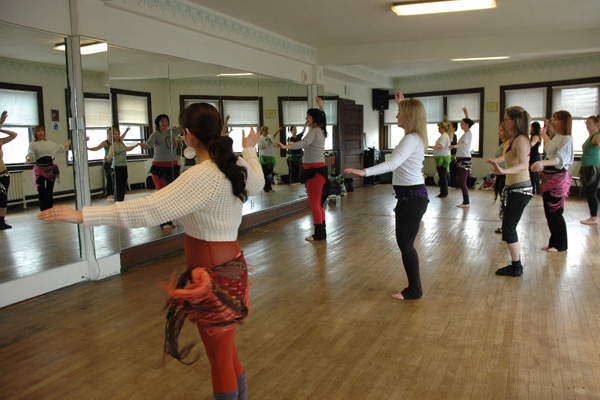
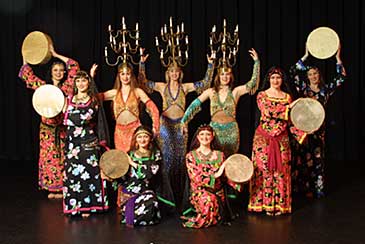
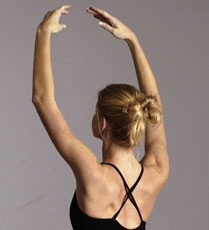
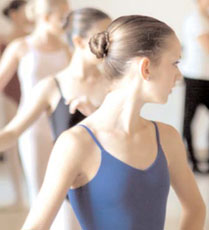
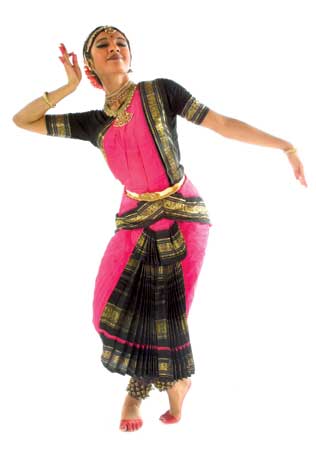

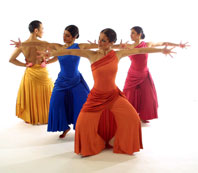


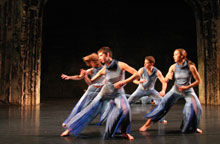
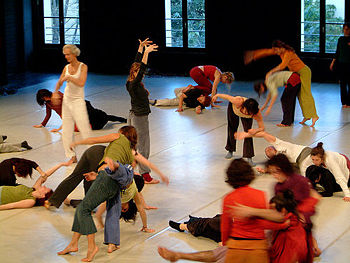
AS A CRITIC, I USUALLY EXAMINE DANCE FROM THE OUTSIDE: its appearance, its emotional and intellectual effect on viewers. But the inside of dance is fascinating in its own right. So, in honor of the warm weather urge to take off your shoes and try something new, here is an inside view of several dance forms you might step into, yourself, this summer.
BALLET
First, let me confess that while Im a total newbie at some of the following forms, Ive been standing in first position longer than Ive been able to spell my own name. Ballet is my home base, the formative dance experience to which I relate all others. Starting with ballet isnt uncommon. If you took dance as a little kid, odds are you took ballet; ask someone on the street to show you what dance as an art form looks like, and theyll probably imitate some ballet. But the centrality of ballet doesnt mean that most people know what its like to actually take an adult ballet class.
For starters, ballet is lot more muscular than it looks. In ballet, nothing ever goes slack. As hard as it is to get all your muscles working at once, thats what youre aiming for. The toes point, the feet flag outward (as opposed to sickling inward), the knees pull up, the thighs rotate out, the abs stay in, the ribs stay in and lifted, the lats and triceps engage to keep the arms up, the hand creates a certain Adam-touching-God curve, the neck stands up, the head inclinesand then, you also must look as if youre enjoying yourself. Ballet may seem to be all about performing steps, but most classroom criticisms are aimed at perfecting this basic ballet posture, whichfor those marvelous moments in which everything comes togetherallows you to do some wonderful things, like spinning three times on one foot or soaring into a split leap without visible effort.
Ballet is also a lot more fun than most people suppose (particularly at the adult level). The sheer pleasure of dancing to the music of a live pianist (dont take a class without an accompanist if you can help it) cant be overstated. Also, plenty of camaraderie develops among dancers. That stereotype of the icy, harshly competitive class with the ballet mistress who likes to thwack and insult her dancersI wont say it doesnt happen, but its not part of the adult ballet experience.
The little ballet dancer nearly everyone knows how to imitate (arms over your head, tweedle around on your toes) underestimates the muscular discipline and the human happiness of ballet, but even that superficial mimicry gets something right: ballet is pretty, erect, and noble. Taking a ballet class, you must become a more virtuous, gracious, and proud version of yourself. Embarrassing as it is to admit, I sometimes inwardly remind myself, Be a princess! Be a princess!not because I then prance around with my nose in the air, but because the admonition prompts me to remember to separate one step from the next, to be clear, confident, and generous. In the context of class, at least (certainly not always in choreography), ballet celebrates the high values of the Western tradition. Look at any painting from the High Renaissance to the neoclassical poses of Jacques-Louis David: these are the people you will become in ballet class.
Where to start: many places around town. The Dance Institute is a good place to beginlive accompanists, good teachers, and easily accessible by light rail.
Who goes: depending on level, youll see bunheads (ballet girls), former bunheads, people whove always wanted to take ballet, modern dancers working on technique, and local professionals on the loose from their own company classes.
Would I go again? Youll find me in the Dance Institutes 9:30am class two to three days a week.
BHARATANATYAM
If ballet is for your inner princess, bharatanatyam (a classical Indian form) is for your inner goddess. The radiant energy, sparkling eyes, stamping feet, and quick razor-edge hands of full-fledged bharatanatyam, not to mention the glamorous gem-tone costumes, surely evoke goddessesbut forget all that for the moment, and lets turn to a basic technique class. If goddesses were to exercise, surely this would be their workout of choice. The rhythmic stamping feet create an almighty thigh burn, and sharp turns and sudden knee-bends feel like practice for throwing lightning bolts. There’s a certain austerity required that would also appeal to the exercising goddess. The teacher stays seated for most of the class, beating out rhythms on a little wooden platform which provides the only music; class is kept simple for beginners, with the glorious arm and facial forms held back until basic steps are mastered.
Taking bharatanatyam reminded me, oddly enough, of playing tennis. Theres so much vigorous attack in this dance form, such unconcealed power; we dont get to act like this much in daily life. Theres also a significant spirituality in bharatanatyam. I felt it only intermittently in the beginner class, but the tantalizing glimpses of the meditative underpinnings of the form did make me want to learn more about this worldview.
Stepping outside after my first class, I had a hard time walking in a straight line and an even harder time adjusting to the beige imprecision of the ordinary world. Where did the brilliant colors go? I couldnt help wondering. Where is the rhythm? Why is everyone just walking along, hands loosely swinging? Where are the fire-breathers? Wheres a hibiscus in bloom or a pile of turquoise silk? Dancing bharatanatyam, you embody a culture; you cant help taking some shreds of it with you into your usual life.
Where to start: Ragamala
Who goes: Everyone. That is, all ages, sizes, and cultural origins among women and girls. Men and boys are welcome, but there just arent many in class.
Would I go again? Id really love to learn more stepsand arms! The low stance does make me a little concerned for my injury-prone knees.
MODERN
Unlike classical forms (ballet, bharatanatyam) modern dance does not have an established set of techniques or a codified classroom form. Several of these techniques exist (Graham, Cunningham, etc), but for the most part teachers invent and cobble together their own steps and class structures. Everything Im about to say, then, is a generalization; plenty of classes dont conform. Also, this means that the best approach for a beginner is simply to take a few classes, find a teacher you like, and then stick with that teacher for a while. If and when you switch teachers, expect to start from near-zero again. Eventually, as you become more proficient, you will get faster at understanding the movement styles of new teachers.
I find modern dance very difficult. With my ballet background, Im used to discrete steps with names and set outward forms, but modern dance movements tend more toward overflow flow and momentum. You could name the steps (and some teachers do nickname particular motion shapes), but that would just distract, because what you need to grab hold of is a larger arc. Generally, its better to get a sense of a phrases breath (most modern phrases have this ebb and flow, up and down, in and out) than to do a series of neat, separate moves. This lack of absolutes leaves me feeling unhinged, a bit as if Im trying to fall out of an airplane well, but where well doesnt mean gracefully or in any particular shape.
That said, if I can get myself to make that leap, I generally feel good in modern class, because the well of modern dance has a lot to do with inner states. Modern is very, very healthy, very much about honest alignment, about freeing up places of tension, and about bodies as bodies in all their diverse glory. To some extent this wave of consciousness about anatomy, about healthy and unhealthy ways to practice, has infiltrated all forms of dance, including that legendary bastion of screwedupness, ballet; but modern dance is its home ground. Here you will find your center. You will find your breath. You will find your classmates eating from little tubs of mysterious homemade rice dishes. You will find weight in your sacrum, you will play with the edges of balance, you will find the floor. You will find yourself feeling the linkage between a hand and a foot, a hipbone and an ear. Mostly, you will find your own body, individual and strong.
Where to start: Many places around town, including Zenon Dance. Many teachers also hold classes independent of studios. Ask your teachers and classmates for recommendations.
Who goes: Dance-folk, mostly. People in the general population just dont seem to say, I think Ill take up modern dance! with the frequency that they take up other forms. But theres no reason this should be so. Modern is friendly to a range of bodies and past training (or lack thereof).
Would I go again? The occasional class, yes; I like the way it makes me feel. But Im putting off really taking up modern for a later decade.
MIDDLE EASTERN/BELLYDANCE
Bellydances popular image may be a no-holds barred shake-fest, but in reality theres a near-mathematical complexity to the various isolations and gyrations the female form is capable of. Theres a difference between rotating your shoulder around and letting it ride up and down on the action of the lat below it. Theres a difference between a hip moving to the side and a hip angling down; theres a difference between jerking your hip up and letting it coast up on a tiptoe foot. All these differences, and more, are the province of bellydance.
Bellydance is as mesmerizing to try as it is to watch. Sex appeal aside, its astonishing to discover all the options, all the patterns a professional has at her disposal. Discovering in your own body the difference between a vertical and a horizontal hip figure-eight is equally astonishing. What a range of motion lies hidden there! I should warn you, however, that freeing that hidden motion isnt easy. Like a car starting up after a long rest, youll sputter and jerk a bit, and your face will reflect the strain. The result? In your first class youll look less alluring, and more as if youre suffering from a gastro-intestinal complaint.
Bellydance is super-feminine. Thats a great part of its appeal, but it may require a wrench if you normally inhabit the modern world. I just wasnt prepared for the sight of myself doing snake-arms and hip figure-eights, and I couldnt stop giggling at my reflection. The instructors winding involutions inspired awe, not giggles; where I looked girlish, she looked majestically, magically womanly. Where ballet urges an ascension where flesh is converted into pure upward energy, bellydance inscribes the mind in flesh. To put it another way, in ballet class Im always wishing for a little less weight, while in bellydance I felt bony. This attitude to the body is enough to pull a lot of women into bellydance, but be ready: youre going to need to become intimate with yourself in this class.
Where to start: Jawaahir and other places around town. You can even hire a teacher to come to a party and teach you and your friends (of course, booze will impair your learning severely).
Who goes: Bellydance is currently experiencing some popularity as a fitness routine (its a killer mid-body workout), so its attracting many young women. In general, though, bellydance is very popular with a lot of different types and ages of women, from moon-goddesses to girl-power disco queens (and everything in between).
Would I go again? If I had an interested female friend, yes.
CONTACT IMPROVISATION
In contact improvisation (“contact” for short), people improvise along with the movements of other people, leaning against each other, trading weight, climbing over each other, or just touching. Contact is largely invisible to dance viewers, who frequently dont know whats choreographed and whats improvised on stage. But if you watch closely, you can spot moments of intense cooperation between dancers, delicate balances and hair-fine weight shifts, which are either improvised live or are derived from previous improvisations. Thats where we usually see contact on stagein brief moments of modern dance performances. Contact class consists of just that cooperation, expanded and broken down into types of contact, different improv structures, and so on.
Contact is unlike a lot of other dance forms in that the art is on the inside. What viewers see can be interesting, but you dont worry about that too much in class; you dont strive for particular shapes. Instead, you pay attention to other bodieswhat they can do, what they want to do, how you can interact with them. Even when youre working with some sort of guideline, contact isnt premeditated. One moment youre lifting someone on your back, the next moment youre rolling across the floor in tandem, then youre leaning against each other, feeling how your two bodies line up. Its hard to convey just how close and messy contact can be. Believe me, its a place where you have to trust the people around you, and its a place where youll find it surprisingly easy to bestow that trust. Our bodies do want to touch, it turns outand not sexually or violently, but in serious play.
So whats contact improvisation like? For me, deeply meditative. Yes, youre in constant communication with other people, but the communication takes place along normally unused channels, and the self you put out there to other people is not your usual speaking and thinking self. Contact is also sweaty (its hard work lifting other people!), exhausting, fun, and addictive. Contact turns the world into a playground: coming out of class, youre liable to trip over a curb, improv your way through the misstep, and find it all really funny (as I did). In class, contact approaches dance therapy. All dances are therapeutic in some sense, but contact is the freest, the most malleable.
Where to start: Zenon Dance. Ask your instructors about improv jams once youve gotten to know the form.
Who goes: Contact improvisation is heavily granola, attracting the most modern of modern dancers. But I dont see why. Anyone whos in reasonably good shape and, most importantly, who can trust and be trusted can take contact. I envision a future in which recreational contact improv is a therapeutic favorite of football stars, gym bunnies, tennis nuts, bunheads, and the rest of us bodies.
One caveat: Contacts unpredictable. It helps if you have strong joints (or know how to protect your weak ones) and can fall, if you have to, without injury.
Would I go back? Absolutely. Tons of fun.
Of course, there are many other dance typesAfrican, European folkdance, tap, jazz, and specific techniques within modern, to name a few. Id like to try out flamencos pounding footwork and warlike, but sexy stance. I wouldnt mind trying to learn some more Fosse jazz if the opportunity arose. And, I definitely want to try aerial dancewho doesnt want to fly?
When you begin a new form (or start dancing for the first time), keep in mind that anything new is frightening and exhausting. You will feel nervous and stressed, and your brain will get as much of a workout as your body. You should also be aware that no dance form is easy. It takes a lot of intensive training to reach excellence in any dance; even competence (my goal, and the goal of most amateur dancers) takes years to attain. No matter how gifted you are at the dance, your first steps will not look the way you want them too.
But, since most dance forms reward a wide range of talents, it wont take you long to find a few steps you easily excel at, whatever your body type or previous training. More importantly, youll be dancing from your first class on. If dance makes you work for expertise, it still yields its basic pleasures even to beginners. The first of these is just the feeling of dancing: being a body moved to music. Such a conscious embodiment breaks the patterns of daily life, freeing us from routine, and ultimately makes us aware of our movement possibilitieseven when were back in the daily round. Dance class is (or should beif it isnt, find a different class) a positive communal experience, a set of felt connections. Dance also allows you to find a hidden selfa spiritual or heroic or sensual selftucked away inside your usual, day-to-day self. All these elements add up to a dance high: an exuberant, complete engagement, an in-body moment in an out-of-body world, that I feel in every dance class I take.
About the writer: Lightsey Darst writes on dance for Mpls/St Paul magazine and is also a poet and editor of mnartists.orgs What Light: This Weeks Poem publication project.